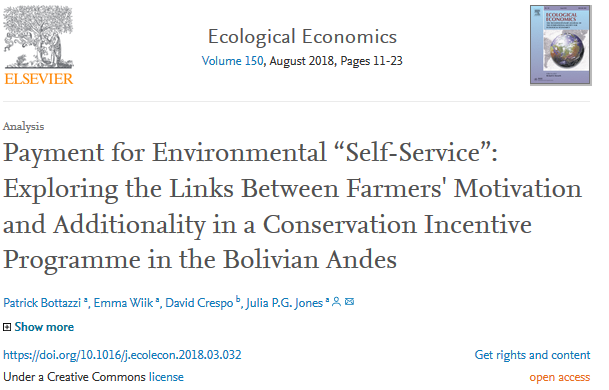
Neoclassical economic interpretations of Payment for Environmental Services (PES), which assume that participants weigh up costs and benefits, are making room for more complex analyses. However, there is still little evidence of how PES programmes interact with existing motivations to conserve, the extent to which funded conservation is additional, and the likely permanence of changes. We categorized the outcome of contracts aiming to reduce cattle grazing in riparian forest (n = 428) and deforestation (n = 912) by Bolivian farmers in terms of whether they were unsuitable, non-compliant, non-additional, or additional (the holy grail of PES programmes) and explored the relationship between farmers’ reported motivations and the extent to which the conservation funded was additional. Up to 39% of contracts to exclude cattle, and 14% to prevent deforestation appear to be additional. Where participation is motivated by the instrumental values of nature (such as provision of clean water) contracts to exclude cattle from riparian forest are more likely to represent additional conservation. We suggest that the programme is partly acting as what we term ‘payment for environmental self-service’; i.e. the external incentives enable changes in behaviour motivated by farmers’ perceptions of environmental benefits they receive from the management changes incentivized.

Click here to see options of full text access
![]()

Leave a Reply
You must be logged in to post a comment.